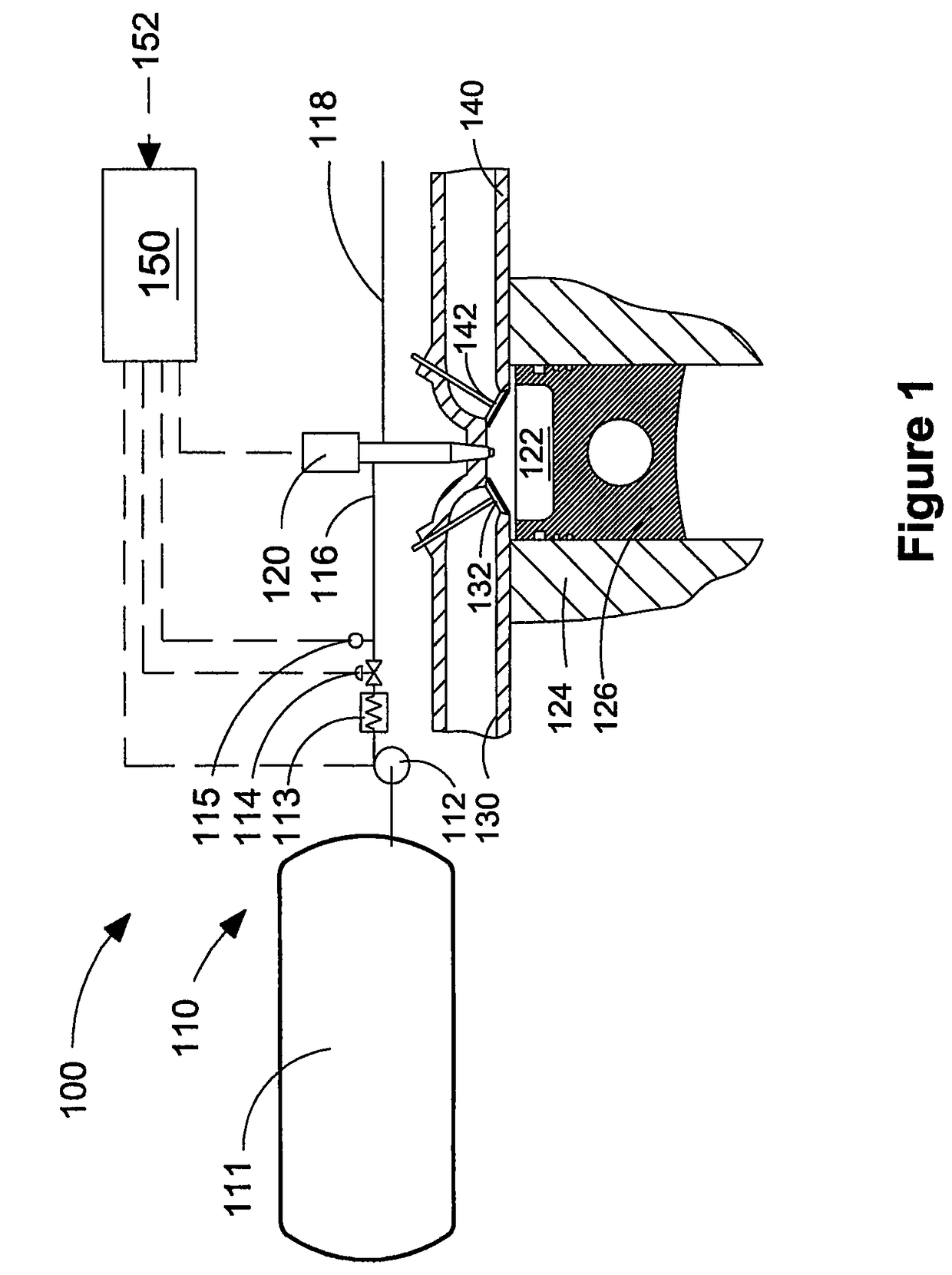Method and apparatus of fuelling an internal combustion engine with hydrogen and methane
a technology of internal combustion engine and fuel, which is applied in the direction of mechanical equipment, machines/engines, gaseous fuels, etc., can solve the problems of lbsi engines, affecting engine performance and efficiency, reducing performance and energy efficiency, etc., and achieves the effect of increasing the amount of hydrogen
- Summary
- Abstract
- Description
- Claims
- Application Information
AI Technical Summary
Benefits of technology
Problems solved by technology
Method used
Image
Examples
Embodiment Construction
)
[0035]FIG. 1 is a schematic drawing of engine apparatus 100, which is adapted to be fuelled with a gaseous fuel mixture comprising methane and hydrogen. Fuel storage system 110 comprises storage vessel 111, which is made to store the compressed gaseous fuel mixture. In the illustrated embodiment, the pre-mixed gaseous fuel mixture can be stored in storage vessel 111, which is rated to store the compressed gaseous fuel mixture at a predetermined storage pressure. Storage vessel 111 is designed to comply with local regulations which can specify safety factors for ensuring containment of the gaseous fuel mixture even in the event of impact, for example if storage vessel 111 is a vehicular fuel tank that could be involved in a vehicle collision. In addition to safety factors and design strength requirements, local regulations typically impose a maximum storage pressure. Compressor 112 is operable to deliver the gaseous fuel mixture from storage vessel 111 to fuel injection valve 120, v...
PUM
 Login to View More
Login to View More Abstract
Description
Claims
Application Information
 Login to View More
Login to View More - R&D
- Intellectual Property
- Life Sciences
- Materials
- Tech Scout
- Unparalleled Data Quality
- Higher Quality Content
- 60% Fewer Hallucinations
Browse by: Latest US Patents, China's latest patents, Technical Efficacy Thesaurus, Application Domain, Technology Topic, Popular Technical Reports.
© 2025 PatSnap. All rights reserved.Legal|Privacy policy|Modern Slavery Act Transparency Statement|Sitemap|About US| Contact US: help@patsnap.com



